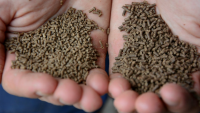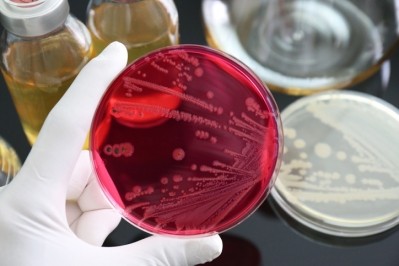Future of formaldehyde in feed: ‘EU did not weigh up paper assessing worker risk’

The Commission told the December 2016 meeting of the Standing Committee on Plants, Animals, Food and Feed (SCoPAFF) it was preparing to deny approval for the use of formaldehyde as a feed additive, with no option to reconsider future authorization.
“Rather than a proposal for use, the Commission announced its intention to draft a proposal for denial. However, there is no new science to prompt such a move,” said Loretta Hunter, global compliance director at Anitox, which manufactures and distributes a formaldehyde product, Termin8, to control salmonella in feed.
Concerns around the use of formaldehyde relate to occupational health risks but not to its use in feed in terms of animal and food safety, she said.
However, Hunter said the EU authorities have failed to take into account the most recent advice of the Scientific Committee on Occupational Exposure Limit (SCOEL), which evaluated worker risk from formaldehyde use.

“We have asked the Commission to draft a 10-year authorization proposal for formaldehyde use in feed that references this opinion and sets the worker exposure levels recommended in the opinion.
“We believe this approach will address member state concerns and align the use of formaldehyde in the feed sector with other industries, providing regulatory consistency,” she told us.
The Commission told Anitox they would consider its request: “We met with them on 17 March. It is unlikely we will hear anything further on this until the SCoPAFF meeting on 24-26 April takes place.”
The company, meanwhile, has also been trying to generate awareness of the SCOEL guidelines in various member states, and the risks to the feed and food chain of a negative decision in relation to the use of the additive in feed.
Feed is recognized as one of the main sources of Salmonella contamination for livestock and, thereby, of the food chain, said Anitox. “Feed ingredients and feed mills are exposed to a variety of sources of potential contamination and re-contamination that are difficult to control.”
Regulatory background
Formaldehyde has been used in feed to prevent the outbreak of Salmonella in poultry and pigs for the past 20 years.
Its use as a preservative in feed fell under the Biocidal Products Directive (98/8/EC) until September 2013, when the directive was replaced by the EU Biocidal Products Regulation 528/2012.
Thereafter, a transition period was established at EU level to allow formaldehyde to be authorized as a microbiological decontaminant under the auspices of feed additive regulations (EC) No 1831/2003, and for the development of effective decontamination alternatives.
That transition period formally expired in July 2015, but the legal status for formaldehyde in feed within this EU animal feed regulation has still not been agreed upon, with a proposal to deny authorization now on the table.
The use of formaldehyde has continued in many EU markets in the interim, pending a final decision by the Commission on authorization.
Deadlocked debate
The regulatory process around formaldehyde use in feed in the EU has been long drawn out and complicated, commented Hunter.
John Thornton, EMEA commercial director, Anitox said the debate has been politicized, while EU risk assessments show the substance to be safe to use in feed at a certain threshold.
The EFSA opinion on formaldehyde in feed in early 2014 concluded the substance could be authorized as a feed additive as long as adequate control measures are implemented to limit the risks for worker.
A change in Poland’s position further complicated matters, said Thornton.
The amendment to the regulatory classification of formaldehyde from a biocide to a feed additive meant, at the member state level, a different department was involved in the decision and the Polish entity was not aware of how producers had been using formaldehyde to control Salmonella in that country.
“We had been less than 2% away from a qualified majority on approval for formaldehyde as a feed additive before December.

“The Polish vote represents a significant percent in terms of a qualified majority in EU committees and that country, a big user of our product, Termin8, had long voted for authorization of formaldehyde as a feed additive in the EU. However, the new department no longer supported that position.”
Taking out the uncertainty
Thornton said his team is working with feed and poultry producers in the Netherlands, Spain, the UK, Poland, the Czech Republic as well as the Baltic markets to address the implications of a potential denial of authorization for formaldehyde in feed applications in the EU.
Anitox data shows....
Total formaldehyde used to treat feed in the EU is no more than 5,000 ton per annum, treating around 6 million tons of feed.
Total formaldehyde use in the feed sector represents less than 0.2% of the total annual production of formaldehyde in Europe for other industries.
“We work with some of the biggest feed millers in Europe. We wanted to remove any uncertainty for them, and so an enormous part of our work over the past few years has been on developing an alternative to our Termin8 product.
“The large producers wanted to see how the replacement – Finio - would work in their business.”
He said adjustments to equipment were needed such as modifications to pumps.
“We have been helping industry to get ready for a transition to Finio by June 2017 should the regulation not support continued use of formaldehyde as a decontaminator, which looks more than likely at this stage.”
Finio, a combination of commonly used and pre-approved phytochemicals and carboxylic acids to treat feed at low inclusion rates, will reduce levels of Enterobacteriacae by more than 90% when applied at a dose of 2kg per metric ton of feed, but will never be as effective as Termin8, he said.
However, Anitox claims the product’s USP is that it provides residual protection for feed up to two weeks after application, enabling feed to be protected against recontamination during the highly vulnerable transport and storage stages, thus maximizing investment for producers.
“Heat treatment - formaldehyde’s main alternative – has no residual effect and therefore does not provide the same level of protection. Organic acids provide neither residual effect in the feed nor the same reduction in Salmonella as formaldehyde does, in fact, many feed mills we work with are not convinced of the efficacy of organic acids in this regard,” added Thornton.
Anitox will continue to market Termin8 outside of Europe, in existing markets and in new ones, particularly in Asia Pacific, while simultaneously exploiting opportunities to grow the Finio business: “Finio has a place in our pipeline regardless of the legislative outcome in Europe. There are an increasing number of markets globally that are seeking Salmonella decontamination options for feed beyond formaldehyde,” he said.















